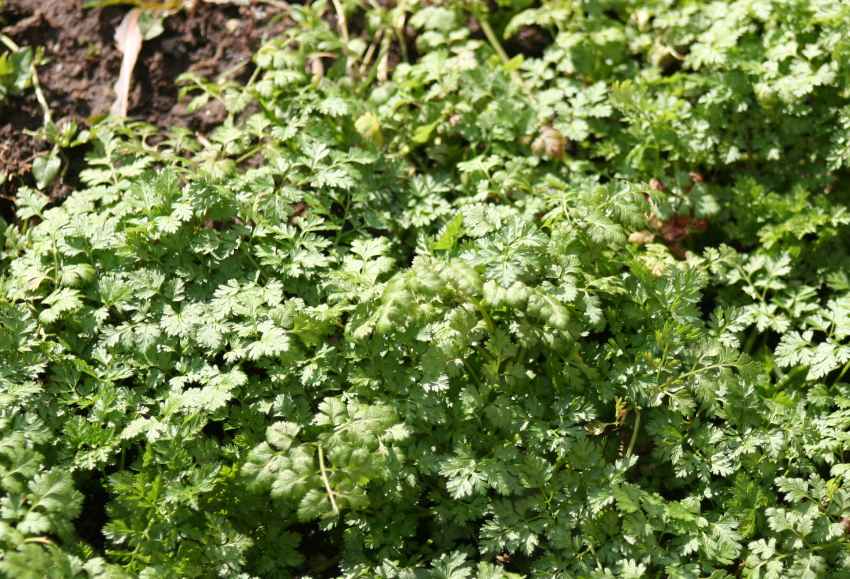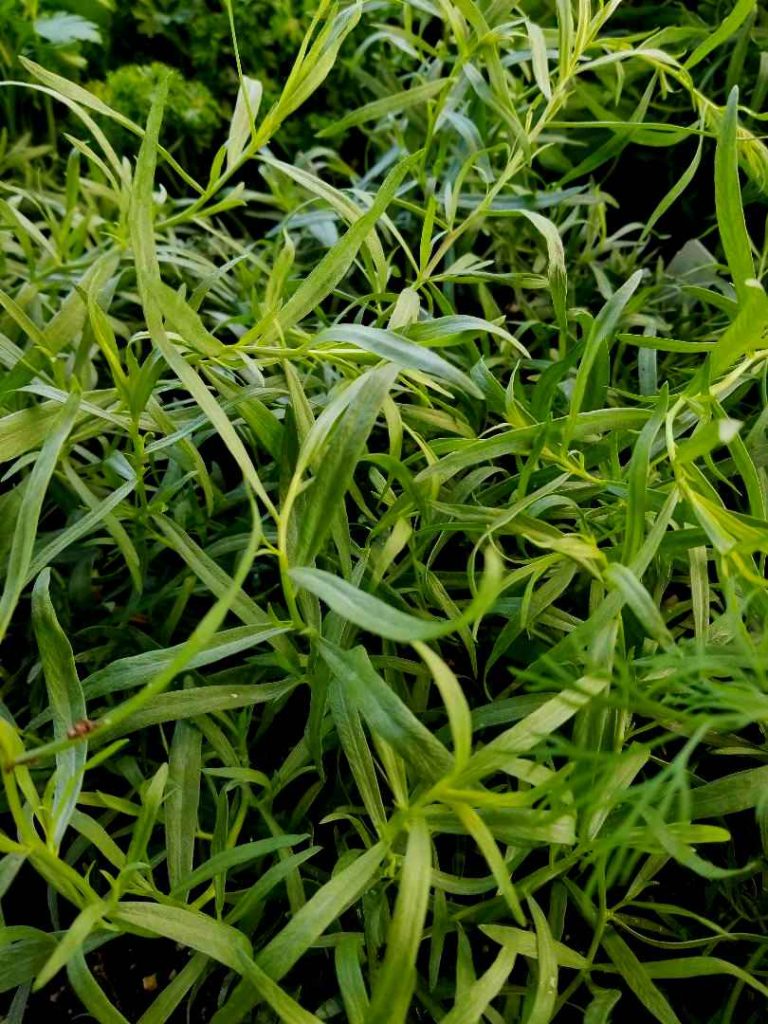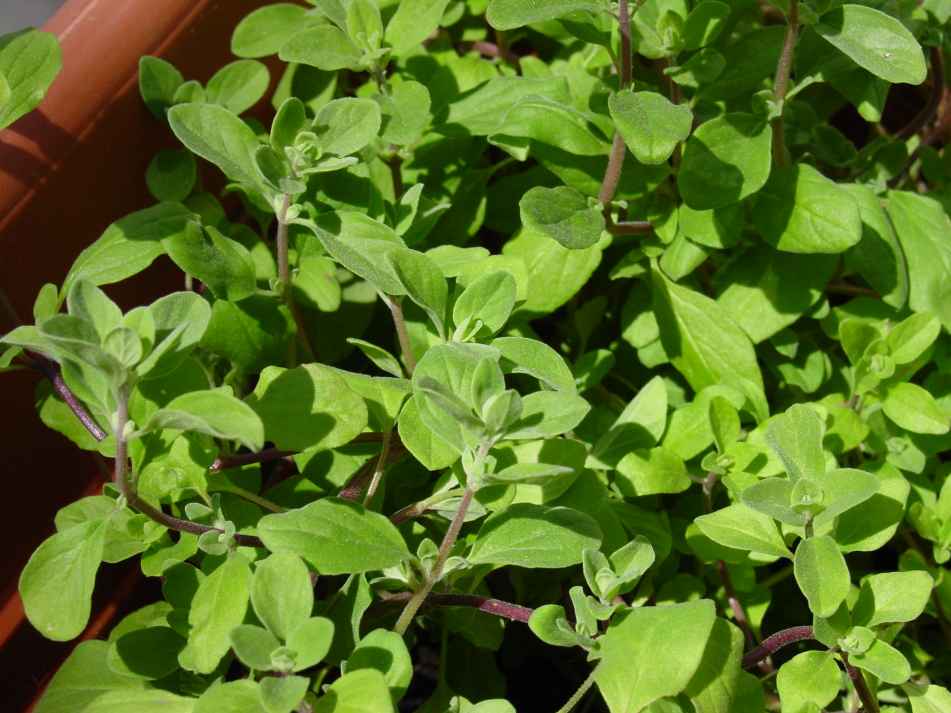Growing fresh herbs doesn’t have to stop when winter arrives! With the right setup, you can create a thriving indoor herb garden that keeps your kitchen full of fresh flavor and greenery through the colder months.
Many popular herbs actually adapt well to indoor conditions, and some even develop richer aromas in the cozy warmth of your home. Imagine brushing your hand across a pot of rosemary or snipping fresh basil for a steaming soup when everything outside is frozen.
Whether you’re a seasoned gardener or just exploring indoor growing, keeping herbs thriving inside is simple and rewarding. All you need is a sunny windowsill or a small grow-light setup to enjoy harvests throughout winter.
So, let’s explore how to plan your indoor herb garden and which herbs grow best inside during the chilly season.
How to Plan an Indoor Winter Herb Garden?
Creating an indoor herb garden for winter is easier than it looks but requires a little planning. With the right environment and thoughtful care, you can have productive, attractive pots of herbs growing all season long.
1. Select Ideal Herbs for Indoor Growth
Choose herbs that adapt well to indoor conditions such as basil, parsley, chives, mint, oregano, and thyme. Many of these herbs prefer steady temperatures and bright light, making them perfect for windowsills or shelves under grow lights.
2. Find the Perfect Location
Natural Light: Place herbs near a south or west-facing window that gets at least 4–6 hours of light daily.
Artificial Light: If sunlight is scarce, use LED grow lights positioned 6–12 inches above the plants for 12–14 hours a day.
Avoid Drafts: Keep plants away from cold windows and heating vents to prevent stress.
3. Choose the Right Containers
Opt for pots with good drainage holes to prevent waterlogging. Terracotta or ceramic pots work beautifully for most herbs, though lightweight plastic is great for shelves or hanging setups. Always use saucers to catch excess water.
4. Use High-Quality Potting Mix
Regular garden soil is too heavy for indoor herbs. Choose a well-draining potting mix with added perlite or coco coir for airflow. Mix in compost or organic fertilizer before planting for nutrient support.
5. Maintain Warm, Stable Conditions
Indoor herbs thrive at temperatures between 60–70°F. Avoid sudden temperature drops and water with room-temperature water to prevent root shock.
6. Water Properly
Only water when the top inch of soil feels dry. Overwatering is one of the main reasons herbs fail indoors. During darker days, reduce frequency since growth slows slightly.
7. Fertilize Lightly
Since indoor herbs grow slower in winter, fertilize once every 3–4 weeks using diluted liquid organic fertilizer. Avoid heavy feeding, which can lead to weak, leggy growth.
8. Harvest Regularly
Frequent trimming encourages bushier growth. Snip the upper leaves with scissors rather than pulling to keep plants looking full and healthy.
Also Read: 17 Perennials that Bloom in Fall and Winter
Difference Between Perennial, Biennial, and Annual Indoor Herbs
Perennial Herbs
Perennial herbs, such as thyme, mint, oregano, and rosemary, can live for several years indoors with proper care. They flourish in bright, sunny spots and benefit from regular pruning to stay compact. Move larger perennials like rosemary outdoors in warmer months if space allows.
Biennial Herbs
Biennial herbs, including parsley and caraway, grow leafy in their first year and produce seeds in the second. Indoors, these are best restarted from seed each winter for steady supply and tender growth.
Annual Herbs
Annual herbs like basil, dill, and cilantro grow quickly under warm indoor conditions and provide flavor-filled harvests within weeks. Start new seeds every two months for continuous production through winter.
19 Herbs That Grow Well Indoors in Winter
1. Basil

Basil loves warmth and bright light, making it perfect near a sunny kitchen window. Keep soil lightly moist and pinch back flower buds to encourage fresh leaf growth. Sweet basil, Thai basil, and lemon basil all thrive indoors with at least 6 hours of sunlight daily or under grow lights.
This tender annual grows quickly and rewards you with aromatic leaves for pesto, pasta, and salads. Harvest regularly from the top to promote bushier growth, and watch for yellowing leaves, which usually signal overwatering or insufficient light.
2. Parsley

Parsley adapts well indoors with moderate watering and bright indirect light. It takes a few weeks to establish but produces lush, fragrant leaves through most of winter. Both curly and flat-leaf varieties grow successfully in containers, reaching about 12-18 inches tall.
This biennial herb grows best in consistently moist soil with good drainage. Snip outer stems first to encourage new growth from the center. Parsley’s fresh, slightly peppery flavor enhances soups, salads, and garnishes throughout the cold months.
3. Chives

Chives grow beautifully in pots with shallow roots and thrive even under lower light conditions. Trim frequently to keep new shoots coming. These hardy perennials form neat clumps and produce delicate purple flowers if allowed to bloom indoors.
Place chives in a bright spot and water when the top inch of soil feels dry. Their mild onion flavor adds brightness to omelets, baked potatoes, and cream cheese spreads. Snip leaves about an inch from the base for continuous harvests all winter long.
4. Mint

Mint grows vigorously indoors, especially in containers where its roots can’t spread. It enjoys moderate light and slightly damp soil. Regular trimming helps maintain dense foliage. Popular varieties like spearmint, peppermint, and chocolate mint all adapt well to indoor conditions.
Keep mint in individual pots to prevent it from overtaking other herbs. Pinch back stems regularly to encourage bushy growth and prevent legginess. Fresh mint leaves brighten teas, cocktails, desserts, and savory dishes with their refreshing, cool flavor.
5. Thyme

Thyme’s low, spreading growth makes it ideal for windowsills. It needs direct sunlight and minimal water, making it one of the easiest herbs to maintain indoors. Common thyme, lemon thyme, and creeping thyme all flourish in bright, warm spots.
Allow soil to dry slightly between waterings to prevent root rot. This woody perennial develops stronger flavor when slightly stressed by dryness. Harvest sprigs as needed for roasted vegetables, meats, and soups, leaving at least one-third of the plant intact.
Also Read: 21 Stunning Flowers to Plant this Winter for a Colorful Garden
6. Rosemary

Rosemary prefers full light and well-drained soil. Mist occasionally to prevent dryness and rotate the pot to ensure even growth. This Mediterranean herb thrives in temperatures between 60-70°F and needs good air circulation to stay healthy.
Water only when the top two inches of soil feel dry, as rosemary dislikes soggy roots. Its needle-like leaves release a piney, aromatic scent perfect for breads, roasted potatoes, and grilled meats. Prune regularly to maintain shape and encourage fresh growth.
7. Oregano

Oregano thrives indoors with strong light and slightly dry conditions between waterings. It’s great for constant cooking use, as frequent trimming enhances its flavor. Greek oregano and Italian oregano both grow well in pots, spreading into attractive, bushy plants.
This hardy perennial prefers temperatures around 65-75°F and benefits from occasional feeding with diluted liquid fertilizer. Harvest leaves before the plant flowers for the most intense flavor. Fresh oregano elevates pizzas, pasta sauces, and Mediterranean dishes.
8. Sage

Sage does best in bright light and cooler indoor temperatures. Allow soil to dry between waterings, and prune occasionally to prevent legginess. Common sage and purple sage both adapt well to container growing, developing attractive, textured foliage.
This woody perennial grows slowly but steadily through winter. Pinch growing tips to encourage branching and fuller growth. Sage’s earthy, slightly peppery flavor complements poultry, stuffing, and brown butter sauces beautifully.
Must Read: 17 Ground Cover Plants for Your Winter and Cold Weather
9. Cilantro

Cilantro grows rapidly indoors but prefers cooler conditions and filtered light. Start new batches from seed every six weeks for continuous harvests. This fast-growing annual thrives in temperatures between 50-70°F, making it perfect for cooler rooms.
Water consistently to keep soil evenly moist, as dryness causes bolting. Harvest outer leaves first, working your way toward the center. Fresh cilantro adds bright, citrusy notes to salsas, curries, and Asian-inspired dishes.
10. Lemon Balm

This fragrant herb enjoys partial light and moderate moisture. Its fresh, citrus scent adds brightness to rooms and makes a soothing tea during chilly nights. Lemon balm grows vigorously indoors, reaching 12-18 inches in containers.
Pinch back stems regularly to prevent flowering and maintain compact growth. The lemony leaves have calming properties and work wonderfully in herbal teas, fruit salads, and fish dishes. This hardy perennial tolerates various light conditions better than many herbs.
11. Chervil

Chervil prefers cool indoor air and indirect light. Keep soil moist, but not soggy, for delicate, feathery leaves with a subtle anise flavor. This delicate annual grows best in temperatures between 60-65°F.
Harvest outer leaves regularly to promote new growth. Chervil’s mild, slightly sweet flavor resembles a combination of parsley and tarragon. Use fresh leaves in French-inspired dishes, egg preparations, and spring salads for an elegant touch.
12. Dill

Dill grows well indoors with bright light and good air circulation. Plant seeds directly in deep containers, as dill develops a long taproot and dislikes transplanting. This annual herb reaches 12-24 inches tall and produces feathery, aromatic foliage.
Water when the top inch of soil dries out, maintaining consistent moisture for best growth. Fresh dill adds distinctive flavor to pickles, fish dishes, potato salads, and yogurt-based sauces. Start new seeds every month for a steady winter supply.
13. Bay Laurel

Bay laurel thrives indoors as a slow-growing potted tree. It needs bright, direct light and well-draining soil. Water sparingly, allowing soil to dry between waterings. This evergreen perennial can live for years indoors with proper care.
Glossy bay leaves develop full flavor when dried or used fresh in long-simmered dishes. Place pots near south-facing windows and rotate regularly for even growth. Bay leaves enhance soups, stews, sauces, and braised meats with their subtle, aromatic qualities.
14. Tarragon

French tarragon grows successfully indoors with bright light and warm temperatures. This perennial herb prefers slightly dry conditions between waterings and benefits from good drainage. It grows 18-24 inches tall in containers.
Tarragon’s distinctive anise-like flavor pairs beautifully with chicken, fish, and egg dishes. Pinch back growing tips to encourage bushy growth and prevent flowering. Harvest leaves regularly for béarnaise sauce, vinaigrettes, and French-inspired cuisine.
15. Marjoram

Marjoram adapts well to indoor growing with full sun and moderate watering. This tender perennial resembles oregano but offers a sweeter, milder flavor. It grows compactly in pots, reaching about 12 inches tall.
Keep soil evenly moist but not waterlogged, and provide temperatures around 65-70°F. Fresh marjoram enhances Mediterranean dishes, soups, and marinades. Harvest sprigs regularly to maintain compact growth and encourage fresh foliage throughout winter.
16. Stevia

Stevia grows indoors as a natural sweetener source with bright light and warm conditions. This tropical perennial prefers temperatures above 60°F and consistent moisture. It reaches 12-18 inches in containers.
The sweet leaves can be used fresh or dried to sweeten teas and beverages naturally. Pinch back stems to prevent flowering and maintain bushy growth. Stevia requires more humidity than most herbs, so mist occasionally or use a pebble tray.
17. Chamomile

German chamomile grows easily indoors from seed with bright light. This annual herb produces delicate, daisy-like flowers perfect for soothing herbal tea. It grows 12-18 inches tall and prefers moderate temperatures around 60-68°F.
Keep soil consistently moist and harvest flowers when fully open. The apple-scented blooms have calming properties and make excellent evening tea. Chamomile also attracts beneficial insects if you eventually move it outdoors in spring.
18. Lavender

Lavender can grow indoors with full sun exposure and excellent drainage. Choose compact varieties like ‘Munstead’ or ‘Hidcote’ for container growing. This Mediterranean herb needs at least 6-8 hours of bright light daily.
Water sparingly, allowing soil to dry completely between waterings. Lavender prefers cooler indoor temperatures and low humidity. While challenging indoors, successful growth rewards you with fragrant flowers for teas, baking, and aromatherapy.
19. Sorrel

Sorrel adapts surprisingly well to indoor growing with bright, indirect light. This lemony herb thrives in consistently moist soil and cooler temperatures around 60-65°F. It grows 12-18 inches tall in containers.
Harvest outer leaves regularly, leaving the center intact for continuous growth. Sorrel’s tart, citrusy flavor brightens salads, soups, and sauces. This hardy perennial tolerates lower light better than many herbs, making it perfect for north-facing windows.
Conclusion
Bringing herbs indoors during winter is a simple, rewarding way to keep your garden alive all year round. With just a few pots, good light, and proper watering, you can enjoy fresh, aromatic herbs even when it’s snowing outside.
Basil, thyme, rosemary, and mint thrive indoors and bring both fragrance and flavor to your home.
Whether on a bright windowsill or under a grow light, these resilient herbs offer a touch of green comfort throughout the cold season, keeping your cooking fresh and your indoor spaces naturally alive.

Khaja Moinuddin, a computer science graduate, finds joy in gardening and homesteading. Join him on this blog as he shares his experiences in homesteading, gardening, and composting